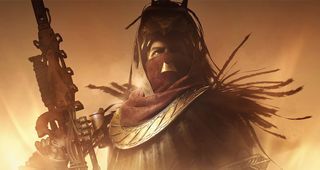
The first DLC for Destiny 2 centres around an infamous Warlock, once thought lost in reality-simulating machine. We soon learn he has actually duplicated himself many times over in order to explore endless possible timelines, all of which seem to lead to a dark future in which a race of time-mangling robots rule over our dead and sunless system. It's juicy stuff, and, for lore nerds like me, the chance to meet one of the coolest characters teased in the original game ought to be a no brainer.
And yet in the wake of the Curse of Osiris expansion, the mood among Destiny 2 fans has spilled over from resentment into full-on riot, so much so that Bungie has issued several "we'll do better" mea culpas since the DLC dropped, and even had to admit to shipping one weapon that was so bugged as to be completely broken. A pretty extraordinary state of affairs for a game that launched less than a couple of months ago on PC, and to largely impressive review scores and sales.
To be clear, the DLC isn't the cause of many of Destiny 2's problems, though it did exacerbate some existing ones. The Curse of Osiris itself is a small but perfectly serviceable expansion. For $20 (or $35 if you go for the pass that also includes the second expansion, due spring), you get a smattering of new story missions which tell the tale of Osiris, a new Raid lair which isn't quite as meaty as the full Leviathan experience, but arguably has a better boss, a couple of extra maps for the Crucible PvP mode, and new exotics to chase. Some of these are repurposed from Destiny 1, which continues to be cheeky given the previous explanation that all our' gear was destroyed in the transition to the sequel.
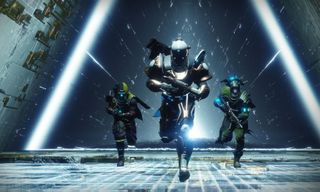
As value propositions go, I think it's largely fine, and certainly familiar from the first game. Curse of Osiris is no Blood and Wine—but hey, what is? And if you plan to stick around playing Destiny 2 (part of the fundamental problem is that much of the casual audience which Bungie has clearly courted probably won't) then more is pretty much more when it comes to content. Or in other words: Without new gear to grind for the machine judders to a noisy halt, so Bungie must keep refilling the well, either via paid DLC like this, or by seasonal refreshes and mini events such as Iron Banner and Faction Rallies.
As for why the fans are so angry, I explained at some length previously, but the short version is that it's a mix of things, including (but not limited to) the opaque way Bungie communicates its plans, the controversy over how XP was secretly being throttled to prevent players earning Bright Engrams (ie loot boxes) too quickly, and owners of vanilla Destiny 2 being locked out of certain activities, such as the Trials of the Nine mode unless they bought the Curse of Osiris DLC. The latter felt particularly egregious for PC players, given that we'd had the game for just six weeks before the change came into effect. Thankfully this was rectified by the most recent update.
Dream of casualification
More broadly, I think the most fundamental problem has been the shift in design focus to attracting more casual players mentioned earlier. On the Bungie podcast, game director Luke Smith described how this had resulted in a "game that doesn't have enough excuses, or reasons, to play for those hobbyist players in the endgame." It's that dearth of incentives which has left those more hardcore players feeling abandoned by Bungie. In their minds, they saved Destiny 1 by sticking around during the content droughts, and expected a sequel that catered more to their taste, rather than less.
I feel the same way they do, as do many in my old PS4 clan and my new PC one, but I also have to acknowledge that I have some friends who do prefer the new design, which doesn't encourage players to no-life the game searching for god rolls on meta guns. But I think most would agree at this point that the pendulum has swung too far in the direction of casualdom—certainly that's the message that comes across from Smith and his fellow senior developers on that podcast, which really is worth a listen. With recent updates, we've begun to see the rollout of features designed to add much needed depth to the endgame.
The biggest gaming news, reviews and hardware deals
Keep up to date with the most important stories and the best deals, as picked by the PC Gamer team.
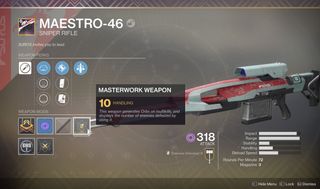
Last week's patch brought armor ornaments to unlock plus a new heroic strike playlist, though frustratingly this still lacks the modifiers designed to spice up the experience from the first game, or any of the bespoke Strike-specific loot. More interestingly, this week we got Masterwork weapons, a new weapon tier that comes with an additional stat bonus and, brilliantly, creates orbs of light on multikills for other players and yourself. It sounds like a small change, but the result is that fireteams with Masterwork weapons equipped are able to pop their supers much more often, which helps to alleviate the lack of tangible player power that some complained of in the second game.
Thus far Bungie's loot boxes have just about managed to dodge being engulfed by the kind of flash fire that threatened to destroy Star Wars Battlefront 2.
These incremental changes are being handled by the game's live team, under the leadership of game director Christopher Barrett, and based on that team's track record during Destiny 1, there's optimism about what can be achieved. But we should also be clear that neither quality of life changes, nor a DLC like Curse of Osiris, can be expected to dramatically alter some parts of the way Destiny 2 works. The subclass skill tree, for example, makes players pick between two distinct paths, but doesn't allow you to mix and match perks, ultimately making for somewhat bland build decisions.
More problematic, and potentially even harder to unpick, is the game's contentious use of microtransactions. The Eververse Store, which sells engrams that include cosmetic items like weapon skins, gear shaders and ships, was introduced during the life of Destiny 1, but has gradually sucked more and more items into its orbit, many of which would be much better placed as rewards for specific in-game activities. Thus far Bungie's loot boxes have just about managed to dodge being engulfed in the kind of flash fire that threatened to destroy Star Wars Battlefront 2, but I don't think they're far off.
Death to Tess
To give you a sense of the mood, here's a video by Briar Rabbit, a prominent Destiny YouTuber (and usually one of the more balanced voices in the community), angrily calling for Bungie to completely kill off Tess, the character who is the unfortunate face of the Eververse store.
And here's another by Datto, who argues that the chase for Eververse items has ultimately become the endgame in Destiny 2. He's right. Way too much of the coolest stuff is locked behind these engrams. Yes, you can earn them slowly by playing—but as we've seen, Bungie isn't averse to gaming that system. It was telling that when Curse of Osiris launched, the Eververse Store refreshed with over 100 new items—even as players were complaining there wasn't enough new actual stuff to do. Longterm I think the studio has to rethink its reliance on MTX, rather than doubling down on the system. Little wonder this advert for a new loot box designer was pulled from view soon after fans found it.
Again, Curse of Osiris had no chance of changing any of this, given that it was well into development before the base game even came out. So its designers had almost no time to respond to any feedback, much less the roiling discontent over multiple issues affecting core systems. And judged on its own merit—purely as an addendum to that base game—I mostly had a really good time with it. Mercury is very small as new planetary destinations go, but the public event is a blast (especially now it’s stopped instakilling PC players with good rigs), and the new raid lair delivers much more than I expected when it was announced.
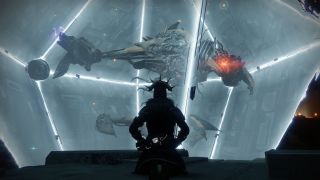
Meeting Osiris wasn't quite as amazing as I'd hoped, but that's always the danger with this kind of fan service. I remember hearing the Clone Wars referenced in the original Star Wars films, and then spending years imagining how cool they'd be to see based on just those two words. We know how that played out.
Osiris fares better: His mix of Egyptian-themed avian armor and cod philosophy feels just about right, though I was expecting perhaps a little more menace from the guardian deemed so dangerous that he was banished from the last city. It's also a shame that we only get to fight alongside him once, and then just barely. Destiny 2's prologue mission put great emphasis on how cool it was to see notable guardians doing cool shit alongside you, so it remains odd that the rest of the game has delivered almost none of that.
Much better is the new ghost, Sagira, who borrows our shell for most of the Curse of Osiris campaign. Played perfectly by Firefly's Morena Baccarin, her performance deftly delivers comedy moments without sacrificing the supposed drama at stake. High praise also goes, as ever, to the art team, who remain absolutely world class. Whether it's the scorched, part-machine plains of Mercury or the The Colony, a grenade launcher that fires insectoid projectiles, Curse of Osiris overflows with gorgeously coherent, striking imagery. They must be as frustrated as us at some of decisions being made elsewhere at Bungie.

You can find some extended thoughts about the campaign in my preview, but having played it through in full twice more, my biggest complaint is with the difficulty level. It's way too easy. Even a sausage-fingered halfwit will be able to breeze through it. During a couple of the Infinite Forest sections you're actually free to just walk past the enemies almost entirely unmolested. What's really odd is that there's then a substantial spike if you choose to play the heroic versions of the post-campaign Adventure missions. These really require friends if you want to avoid dying too often. Some sort of middle ground between the two extremes would surely be preferable.
Sorting the wood from the robot trees
The blocky concrete platforms result in a vibe that's a bit like looking for where you left your hatchback in an alien multistorey car park.
As for the Infinite Forest itself, it's a letdown. Based largely on the name, and the fact we knew it was part of a Vex reality-simulating engine, players expected some sort of replayable activity, much like the Court of Oryx or Archon's Forge from Destiny 1, only better. But this forest is infinite in name only. What it actually is is a series of hand-designed, interlocking platforms, populated by existing enemies drawn from throughout the game. Think Lego blocks snapped together in a random order.
The forest is used in the campaign and as part of Adventures as a segue between the main story beats, but doesn't have it's own bespoke mode attached. For all its supposed randomness, I can barely differentiate one journey through it from another. And though I like the art style of towers suspended in the sky, the blocky concrete platforms result in a vibe that's a bit like looking for where you left your hatchback in an alien multistorey car park. Robbed of truly distinct moments, it ends up feeling like filler.
Speaking of which, perhaps my biggest gripe with Curse of Osiris comes after the campaign. Mercury's post-campaign 'world quest', which is eventually unlocked once you've forged enough weapons at the Lighthouse, involves the search for another legendary guardian who had been thought lost: Saint-14. I won't spoil how it plays out, but suffice to say it involves more schlepping across the Forest, some pretty serious grinding for materials—which, to be fair, some sado-masochists do want more of—and culminates in a hilariously underwhelming reveal that left me disappointed at how such a cool piece of lore had been thrown away (but also in possession of quite a cool new shotgun).
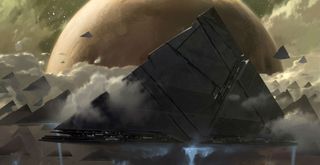
Which kind of sums up Curse of Osiris, and Destiny 2 so far. For every two good new things that Bungie does, there's at least one decision that seems either inexplicable or outright bonkers. Aside from the art and sound teams, it feels very hard to trust those making the decisions around key systems and the sandbox right now. I hope that in the future some different voices start winning the internal arguments.
And so the game finds itself much like Osiris, hovering over a junction point at which many possible futures are laid out. There's still a timeline in which the depth those hobbyist players crave gradually gets added into the game, the microtransactions are dialed down, and the game evolves into that all-consuming shared world shooter that many of us still want it to be. Equally though, more mistakes around how players are treated, and another expansion that doesn't make substantial enough changes, would point to a dark future. That fate now rests in the hands of the live team. I'm still hoping the light wins out.
With over two decades covering videogames, Tim has been there from the beginning. In his case, that meant playing Elite in 'co-op' on a BBC Micro (one player uses the movement keys, the other shoots) until his parents finally caved and bought an Amstrad CPC 6128. These days, when not steering the good ship PC Gamer, Tim spends his time complaining that all Priest mains in Hearthstone are degenerates and raiding in Destiny 2. He's almost certainly doing one of these right now.
Most Popular

